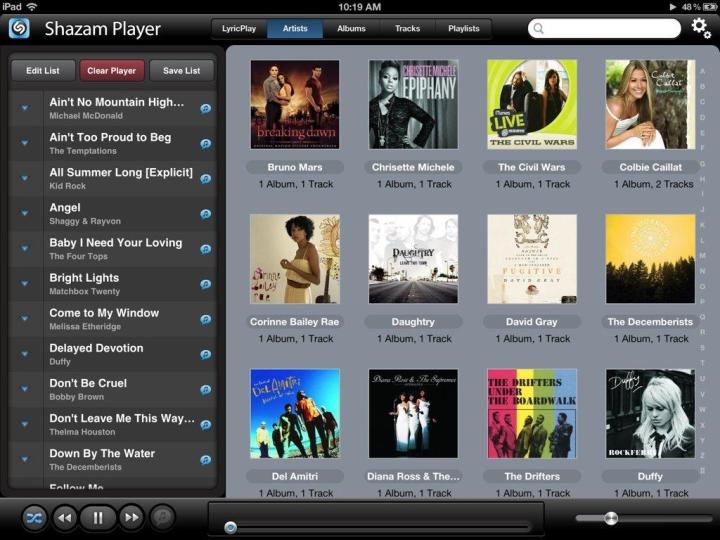
In a chat with news outlet Reuters at Mobile World Congress this week, Shazam boss Rich Riley said his team is working on a new feature to allow users to ID everyday objects via a smartphone’s camera.
This means you could Shazam a packet of food in a grocery store to bring up more detailed nutritional information, or do the same for a DVD case so you can download the movie’s soundtrack, Riley said.
‘Expand the universe’
“We want to expand the universe of what you can Shazam,” the CEO told Reuters. “The famous blue button that our users love will remain on the home screen but will be able to do much more.”
Riley declined offer up any details on precisely how the proposed Shazam feature would work. It’d be great to think the team is looking at developing actual image-recognition technology rather than incorporating something like a simple barcode reader into the app, but hopefully all will be revealed soon.
Those familiar with Amazon’s Fire phone will know all about a similar-sounding feature called Firefly that allows users to scan everyday objects and then, if you wish, purchase them through Amazon’s online store. And like Shazam, Firefly can also ID music tracks. However, Firefly is only available on the Fire Phone, whereas Shazam can be loaded onto most iOS and Android devices, giving it far greater reach.
Riley didn’t say when its object-recognition feature might become available, but said its development would be funded with some of the $30 million it picked up from a number of investors in January, which followed a $40 million cash injection from Mexican telecoms billionaire Carlos Slim two years ago.
London-based Shazam launched in 2002, though the service really took off in 2007 with the arrival of the iPhone. The popular app now has more than 500 million users around the world, with its music ID feature leading to more than half a million track sales a day.
Editors' Recommendations
- Amazon expands its virtual healthcare service across the U.S.
- Three reasons Facebook/Meta is shutting down its face recognition system
- With Amazon in its sights, Walmart expands its Delivery Unlimited service
- Domino’s swerves around traffic by expanding its ebike pizza delivery service
- FaceApp will do an about-face on its problematic terms of service


